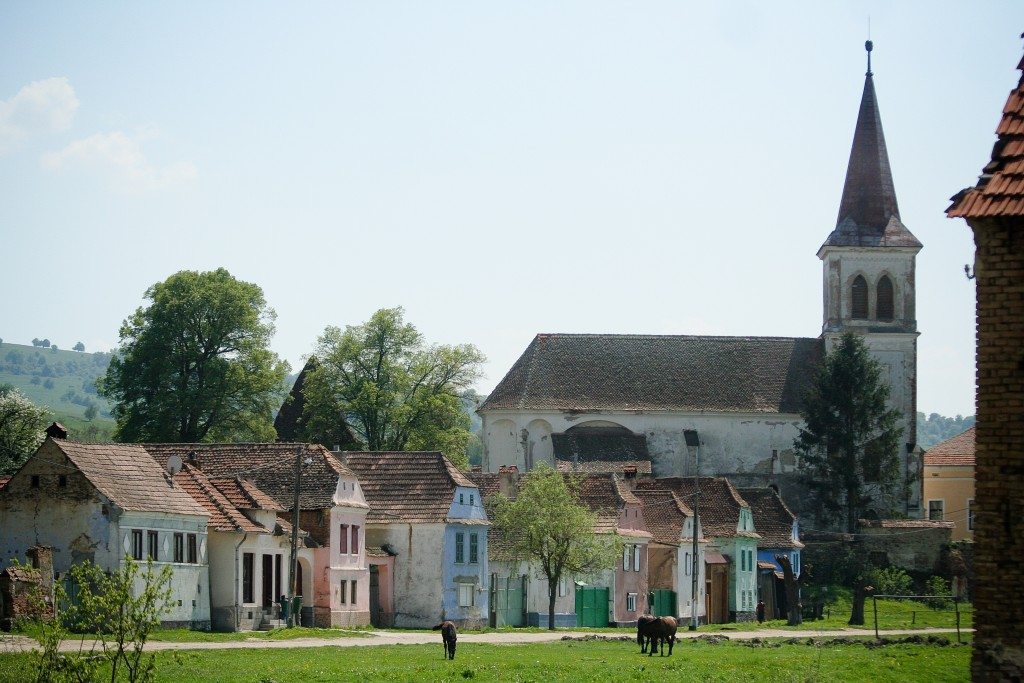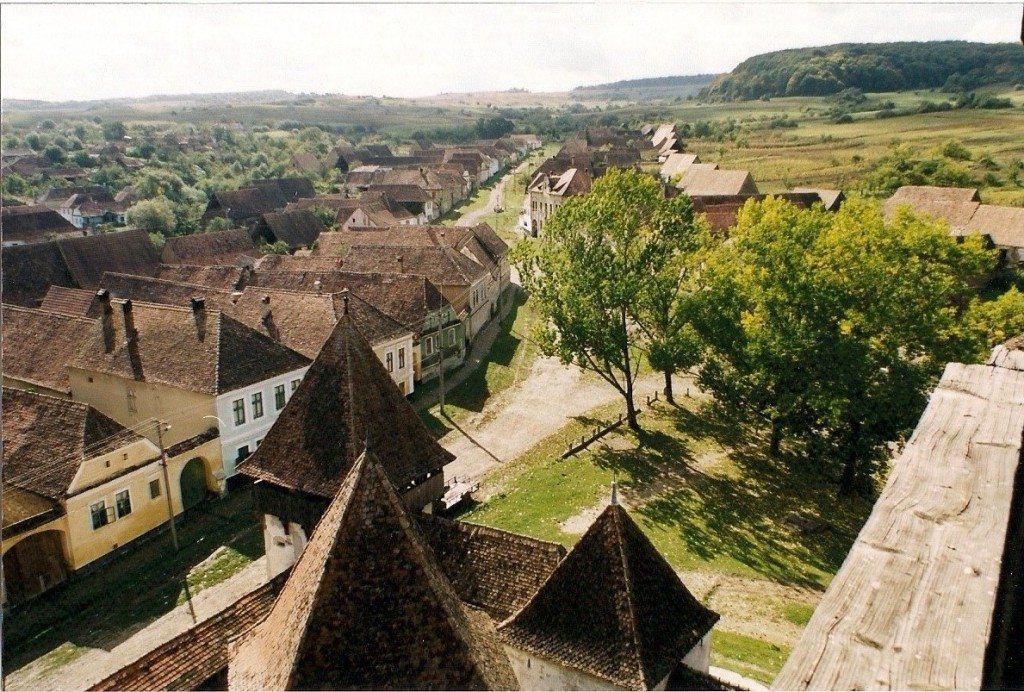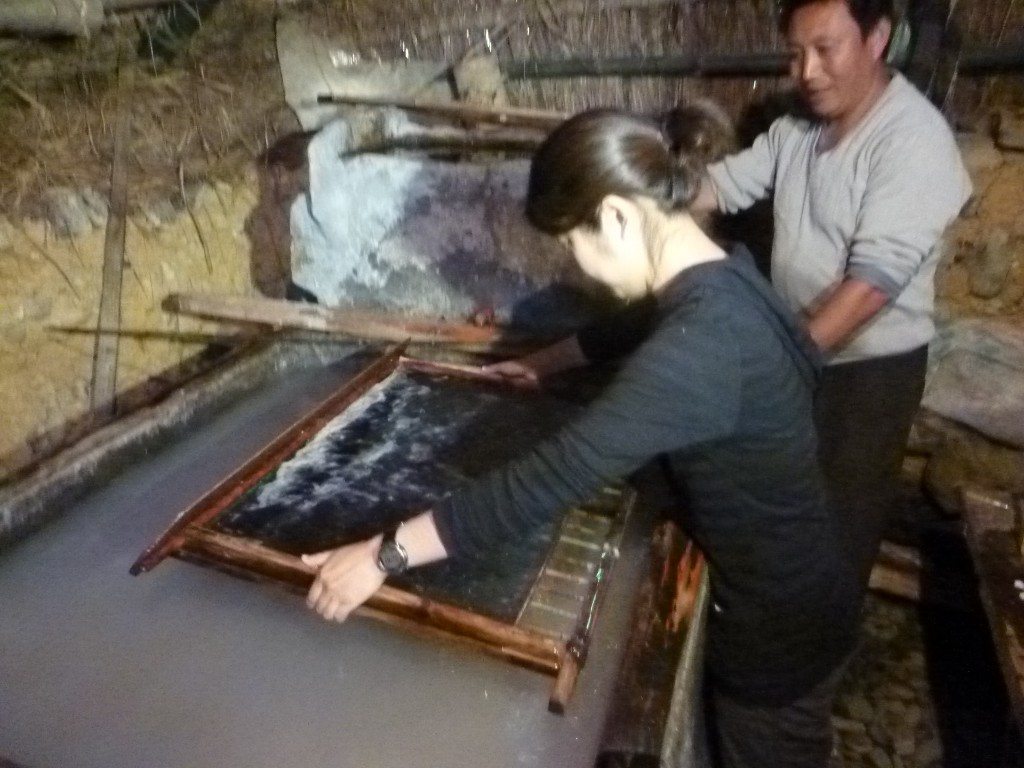Since its founding in 2002, Global Heritage Fund has protected, preserved and sustained the most significant and endangered cultural heritage sites in the developing world. Focusing its efforts on preservation and responsible development of the most important and endangered global heritage sites, Global Heritage Fund selects projects using the strictest criteria.
In this exclusive interview, James Blake Wiener of Ancient History Encyclopedia (AHE) speaks to Mr. Stefaan Poortman, Executive Director at Global Heritage Fund, about the importance of cultural heritage in addition to what Global Heritage Fund has done to save the world’s cultural treasures.
JW: Mr. Stefaan Poortman, welcome to AHE! Our interview comes at a time when archaeological and cultural heritage sites are in peril or destroyed in nearly every corner of the world, so I thank you so much for your willingness to speak with me.
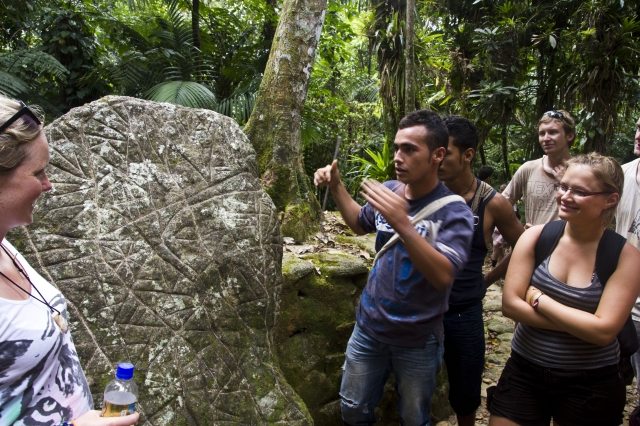
A stone slab from the ancient city of Ciudad Perdida in Colombia. (Photo Credit: William Neuheisel. Courtesy of GHF.)
In your words, could you tell us why cultural heritage and major archaeological sites merit protection as well as higher awareness among the public?
SP: The impact of cultural heritage on civil society is exponential, it always has been even during their glory in ancient civilizations — it’s about national pride, identity, a sign of prosperity, a source of education, inspiration for the arts. If we approach it with the same careful regard today, as a treasured and smart investment, we can leverage these sites to promote sustainability. The perspective needs to change because “ruins” are more than just reminders of a bygone era; they’re building blocks, especially in countries where protection of endangered sites yielded an impressive economic growth. Cultural heritage sites can bring economic, social, cultural and political benefits on a local, national and even regional level.
When you travel today, you’re told about the carbon footprint you leave behind, but there’s also an economic footprint, so to speak. Millions of communities can benefit from a sustainable tourism boost, if their heritage sites are well protected and perhaps more importantly, properly managed. Some sites are undergoing major transformation while others are in decline; that disparity means there is something wrong. There’s the issue of disrespect at sites around the world. There have been recent talks about enforcing a hands-free code of conduct at heritage sites, and that’s probably a good call. We’re all “ambassadors” and there is a lot of room for home improvement, everywhere.
When you look at the Middle East, there are two conflicting reactions; the first is a frustrating ‘why are we letting this happen?’ and on the other hand, a sense of helplessness and the risk is that people will become apathetic. And the greater risk is that in future generations, all of this may be forgotten. There will be no knowledge of these sites, much less history books, to tell the story of civilization. The destruction to cultural heritage is not a regional crisis, it is an international disaster on every scale. Antiquities are being sold on mobile applications, unreported heavy looting continues, and incredible treasures are being ripped from the ground.
There are many people, conservation experts and concerned locals, who are sorting through the stone and sand, risking their lives to hide and protect whatever they can safely get their hands on. They are guardians for the historical footprint of our civilizations, so there is a call to action: there’s a lot of work to be done.
JW: How are Global Heritage Fund sites chosen and designated? Is there a selection process or specific set of criteria that must be met?
SP: Absolutely. Global Heritage Fund (GHF) supports significant projects that are models for sustainable development, add value to communities, and have the potential to leverage matched funding from partners and authorities. Projects are assessed in terms of risks, as well as opportunities for success. All projects are in countries or regions in need with a primary focus on least developed countries and regions (based on international standards or definitions such as those used by the World Bank) and all projects involve planning and conservation.
- World Heritage Status — the project must involve, or clearly have the potential to be a site inscribed by UNESCO as a World Heritage site, or on the State’s Party’s Tentative list. In some cases, an independent analysis demonstrating that the site is likely to meet World Heritage criteria may be acceptable as long as the site demonstrates outstanding universal value and exemplifies no less than 2 of the 10 World Heritage criteria. In these cases, the site’s significance is assessed in terms of tangible and intangible heritage, including testimonies of civilizations that have disappeared and its importance to the global community.
- Highly Threatened — The site must be “at risk” or “in danger” where the significant loss of the cultural asset will occur within 5 years if no action is taken. Threats may be physical (due to decay or neglect), developmental, economic or political. The site must have the potential for adequate protection and management.
- Accessibility — The project must have sufficient public access to ensure that sustainable tourism and community development efforts have a reasonable chance of success. Assessment of a potential site should also take account of the threats that public access, if not properly managed, can pose.
- Community Development — The project must have the potential for sustained preservation through an associated community. There should be adequate and well-managed access to the site, and community development will be a central goal. Some examples include: job training, conservation training, sustainable tourism development, community economic development, local infrastructure development, gentrification prevention, stakeholder identification, awareness raising, educational programs and templates for the supportive transference of intangible cultural heritage.
- Project Leadership — The key to a successful project is a strong Project Director who can coordinate the various scientific, economic and political aspects of a site project and commit to significant periods of time in order to ensure continuity and capacity transfer.
Other areas of consideration include:
- Project Timeline
- Partnerships/Identified co-funding
- Public Relations Appeal/Donor Potential
- Risks
- Ownership/Sustainability
- Portfolio Considerations — urban versus rural, archaeological versus architectural
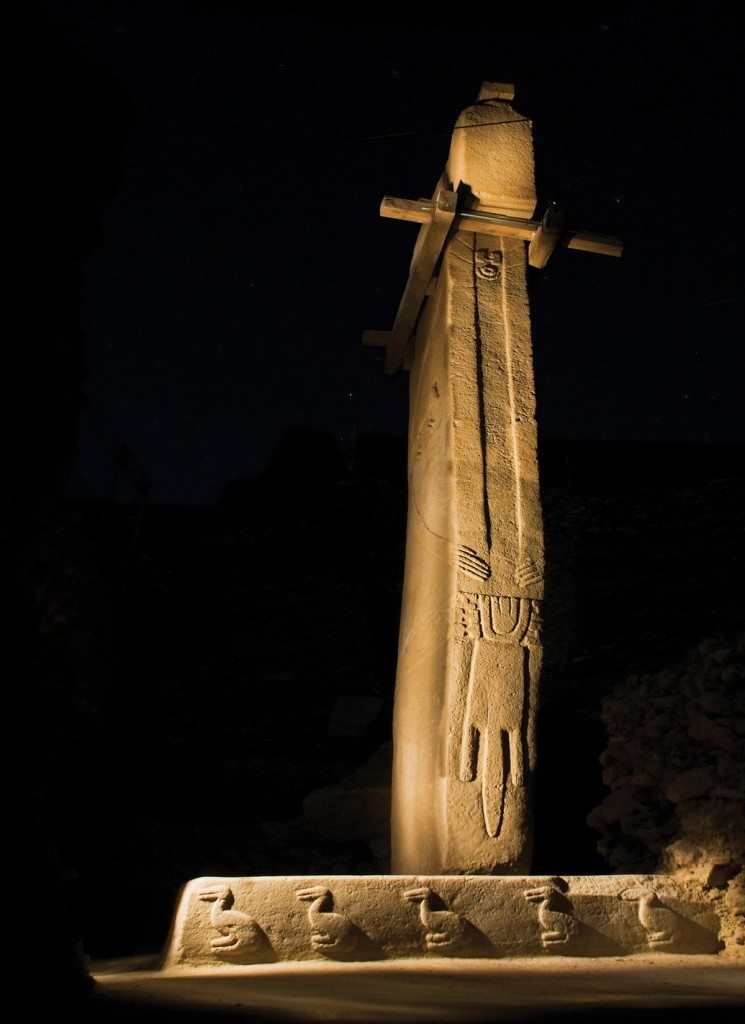
An ancient column at Göbekli Tepe in present-day Turkey. (Photo Credit: Mr. Nico Becker. Courtesy of GHF.)
JW: How would you describe and characterize GHF’s approach in its efforts to conserve, rehabilitate, and promote heritage sites of global significance?
SP: Working through our Preservation by Design™ methodology (integrated planning, conservation, community development and strategic partnerships) around the world has proved to be an indispensable tool for us and for our project directors on the ground, from Colombia to China. We’ve been able to form incredibly strong partnerships in places where civil society and government were unable to communicate and generate change for years on end. That has drastically changed; we’ve had to sift through a lot of sand to reach this point, but we’ve achieved significant milestones to the point where UNESCO now is partnering with us on official preservation guidelines for preserved sites and entire cities.
JW: GHF seems to emphasize the role of local communities in preserving sites. How is the local community involved in GHF’s projects?
SP: What community-based conservation does on a local level is nothing short of miraculous; people have learned to read and write, run professional programs to scan ancient sites, artisans are resurfacing, and locals are running their own businesses. On an international level, being able to come in and ignite that growth is exactly what it’s about. Community-based conservation is the most effective approach to the preservation of cultural heritage. We’re there to re-hand over cultural heritage to the locals who are the stewards of their culture. This is the most compelling model for development because people begin to view heritage as a valid asset and an important future investment.
…The destruction to cultural heritage is not a regional crisis, it is an international disaster on every scale. Antiquities are being sold on mobile applications, unreported heavy looting continues, and incredible treasures are being ripped from the ground. There are many people, conservation experts and concerned locals, who are sorting through the stone and sand, risking their lives to hide and protect whatever they can safely get their hands on. They are guardians for the historical footprint of our civilizations, so there is a call to action: there’s a lot of work to be done.”
JW: Tell us about the impact preservation has on economic development, what has been GHF’s experience on site?
SP: Kick-starting preservation projects in places where there was never any such opportunity before, or where we’ve seen one-crop industries on which millions were previously dependent, is a game changer for local economies. It’s no longer about bringing in a foreign team that is experienced and capable to do the work; we bring in the experts to work with locals — authorities and members of the community.
GHF’s team and partners work with traditionally sourced, local materials to ensure authenticity. The need for authentic materials means local artisans are key resources, which is a meeting point for both the older and young generations alike. Local laborers are employed to assist experts, who in turn are transferring their knowledge and helping build the local capacity. Locally sourced materials get the local economy moving. In all these points of contact, the community has the chance to engage, learn and acquire new skills Preservation also drives infrastructure development, creating opportunities to pave new, better roads and even introduce electricity. Heritage preservation is a catalyst for growth; it’s an economic engine. At sites like Göbekli Tepe, Turkey and Banteay Chhmar, Cambodia we see this working extremely well.
Banteay Chhmar now has a Community-Based Tourism Board where visitors can find local homestays run by the families. Families are learning how to run their own businesses, diversifying their economy from one crop industry to new income opportunities. They are now are able to send their children to pursue an education. The government has recently provisioned electricity to the local communities, and there are plans for a new visitor center.
Discoveries at Göbekli Tepe has spurred a lot of in-country investment from the Turkish government and private bodies. There are now 60 local community members employed on-site, many of whom worked alongside the late Professor Klaus Schmidt from the get-go, and their knowledge of the land and stone works have been vital to the preservation of Göbekli Tepe. Investments here have created a ripple effect of new activities and businesses. There is a new visitor center in development that will employ locals from the surrounding communities. One of Turkey’s most important archaeology museums has recently opened in Urfa (Sanliurfa), making this part of the country an important archaeological hub. And of course, bringing in new jobs. A local institute will aid in training local community members as guides for the site.
JW: Stefaan, could you tell us about two or three key GHF projects currently under way? There’s a lot going on! It ought to be mentioned that GHF undertakes a great deal of research and investigational reconnaissance of sites too.
SP: This is very true, James. GHF project investigations can sometimes take several years. In ascertaining the merits of a project, GHF will make selective initial or pilot investments to determine the viability of the site, the receptiveness of the local community, the effectiveness of the project team and the general policy environment. We work in inherently risky environments — caution and due diligence are critically important to our overall project success.
The Carpathian Villages of Transylvania in Romania have stood the test of time and legend, with almost nine centuries of monumental existence. The cultural and architectural heritage of this region is also home to one of the last medieval outposts in all of Europe, preserved in its authentic form. GHF is working with Associata Monumentum and The Anglo-Romanian Trust for Traditional Architecture (ARTTA) to preserve the architectural landscape by building new kilns to produce the traditional tiles and bricks that are needed to preserve the homes. Modern materials such as plaster and cement have placed a lot of pressure on the old structures, not only causing further damage and harming the landscape, but also impacting the value of people’s homes. Together with the local community, GHF and partners are working to bring back a historic tradition, calling all experienced artisans to partake and pass on the craftsmanship to younger generations.
In China, GHF has partnered with UNESCO, Guizhou Cultural ministry, Tongii and Peking Universities, and a young NGO by the name of You Cheng. Dali is part of the Dong Villages, on the UNESCO Tentative list, and the way of life here has not changed much. GHF is working to conserve the communal drum tower, central to the Dong community. By leveraging on local, paid workforce, GHF and partners will also take on restoration of the “wind and rain” bridges, emblematic of Dong villages. You Cheng will work to support and promote local intangible heritage, including the historic paper making facilities of Heshui Town, while the government will construct an eco-museum that will help local farmers to improve their yields and practice.
On Turkey’s “Tentative” list for World Heritage nomination since 2003, Sagalassos is GHF’s newest project. Global Heritage Fund has partnered up with the Catholic University Leuven (KU Leuven) whose team has been working at the site since 1990 on a large-scale archaeological research and investigative project. Numerous buildings and monuments have been exposed, offering important information as to the Hellenistic, Roman and early Byzantine history of the town. The project includes emergency repairs and conservation work alongside development of a site management plan, regional tourism assessment and investing in community development programs. Our objective is to lead Sagalassos into official UNESCO World Heritage Site inscription..
JW: What are two of your personal favorite projects that you would recommend for travelers looking to engage with cultural heritage?
SP: So many of sites and our projects are unique and attractive for a variety of reasons. Göbekli Tepe in Turkey is impressive in terms of its age — 9500 BCE — the world’s first ever ceremonial site. Banteay Chhmar in Cambodia is an Angkorian temple complex set in a remote village setting. You have the feel of Angkor in terms of size and grandeur, but with less than 4000 annual tourists, you are likely to have the place to yourself. El Mirador in Guatemala in impressive because of its remoteness and size. The site is three day hike from the nearest town through pristine tropical forest in the heart of the Maya biosphere. The site is also home to the earliest Maya temples and the largest pyramid in the world by volume. Chavin de Huantar is found up high in the Cordillera Blanca in Peru. It is one of the oldest civilizations in the Americas complete with extensive and impressive underground galleries, not to mention the famous Lanzon. Ciudad Perdida in Colombia gives travelers the chance to discover a site hidden in the jungle for more than a thousand years, and only accessible by a 44km (27 mi) roundtrip trek trough challenging terrain.
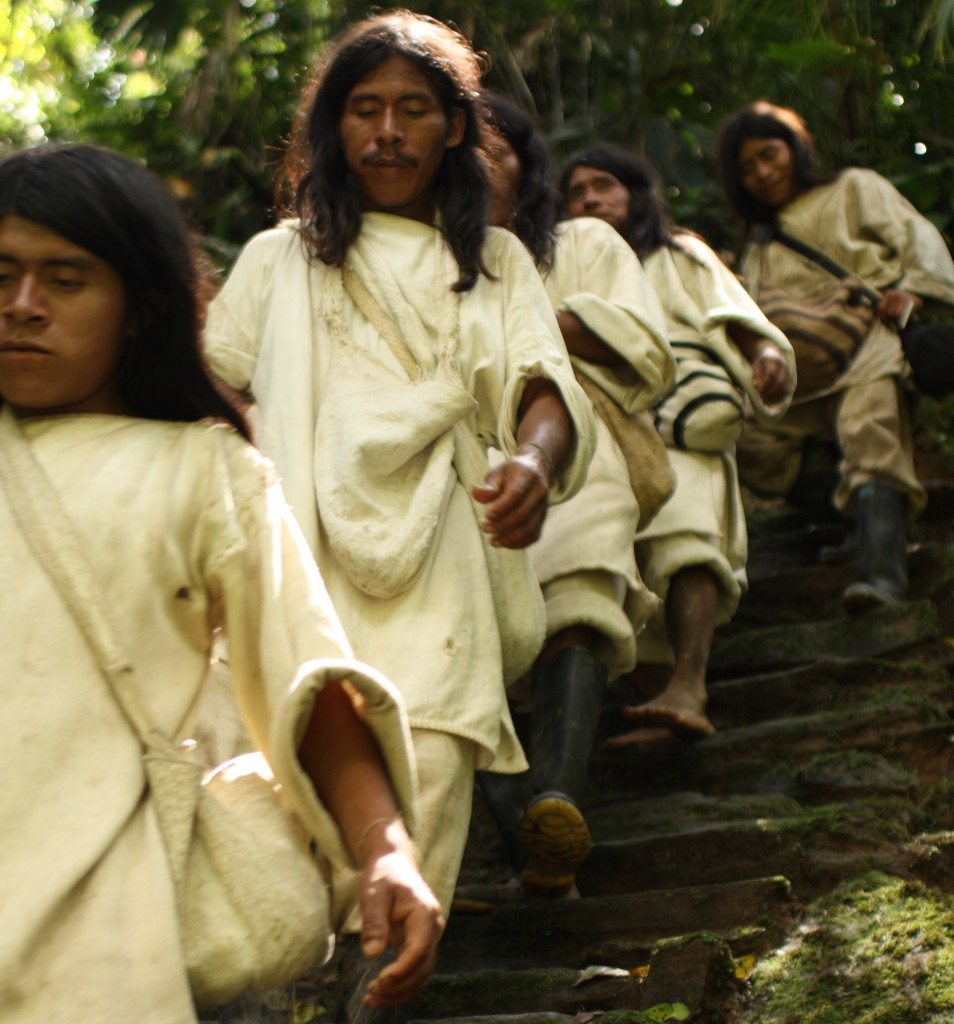
Kogi — an indigenous ethnic group that lives in the Sierra Nevada de Santa Marta in Colombia — walking down the stairs in a special ceremony at Ciudad Perdida in Colombia. (Courtesy of GHF.)
JW: I must tell you that AHE users and readers feel strongly about the importance of cultural patrimony and heritage. Many, however, are unsure of how they can best assist organizations like GHF.
In what ways can private citizens support and participate in GHF’s activities worldwide? What kind of urgent support is urgent and required at this time?
SP: The easiest way to get involved is to donate. Financial contributions as small as $10 to Global heritage fund can make a big difference. Private donations can help provide support for local labor and materials. We are working in parts of the world where small amount of money go a long way and can contribute in a meaningful way to conservation, jobs or income for local communities.
We are also seeking to build a network of volunteers to assist our Project Directors on particular activities on site. Photographers and independent photojournalists are welcome to contribute feeds and information about cultural heritage sites. Each year, GHF organizes about 2-4 trips for private donors to experience the impact of their sponsorship. Sometimes these itineraries are open to individuals, especially those who are taking an interest in heritage and community development philanthropy, and are looking to get involved. In that case, you can find all the information on our website and can join the mailing list to sign up.
Finally, we view storytelling as an important part of each project and are looking to expand our partnership network with associations that promote journalism in developing countries, especially in countries where GHF is currently working. So if locals have a good story to tell with access to video, good knowledge of English language, and writing abilities, that could be something worth exploring.
JW: Stefaan, I thank you so much for your time and consideration at this most important time.
SP: Thanks for this great opportunity, James. It’s been a pleasure speaking with you!
Mr. Stefaan Poortman joined Global Heritage Fund (GHF) in 2005 and currently serves as Executive Director. Stefaan is responsible for the management and operation of GHF in addition to the strategic direction of the organization. In addition to being a member of GHF’s Board of Trustees, Stefaan is a member of the Board of Directors of the Tayrona Foundation for Archaeological and Environmental Research (FIAAT – Fundación de Investigaciones Arqueológicas y Ambientales Tayrona) in Colombia. Prior to becoming Executive Director, Stefaan served as GHF Vice President of Partnerships where he lead GHF projects and fundraising in Latin America, Europe, the Middle East and Africa in addition to managing institutional and project partnerships. Stefaan also directed GHF’s global community development program including strategy, project activities and fundraising. Stefaan has over 17 years of experience with international non-profit organizations. Prior to his work with GHF, Stefaan worked at the World Resources Institute (WRI) in the Climate and Energy Program, focusing on the development of voluntary corporate greenhouse gas accounting and reporting programs in Mexico, India, the Philippines and South Africa. Stefaan also worked with Chemonics International, helping to develop on-line project monitoring and evaluation tools for environmental sustainability projects and also with the World Foundation for Environment and Development (WFED), helping to broker bioprospecting agreements between conservation areas and biotech companies in the U.S. and internationally. Stefaan holds a MA with Honors in Economics from the University of Edinburgh, Scotland, with a focus on developmental and environmental economics. Stefaan speaks Dutch, as well as some French and Spanish.
All images featured in this interview have been attributed to their respective owners. Images lent to the Ancient History Encyclopedia by Global Heritage Fund have been done so as a courtesy for the purposes of this interview. We extend our special thanks to Ms. Elinor Betesh, Public Relations Manager at Global Heritage Fund, for her assistance in helping facilitate this interview. Unauthorized reproduction is strictly prohibited. All rights reserved. © AHE 2015. Please contact us for rights to republication.
